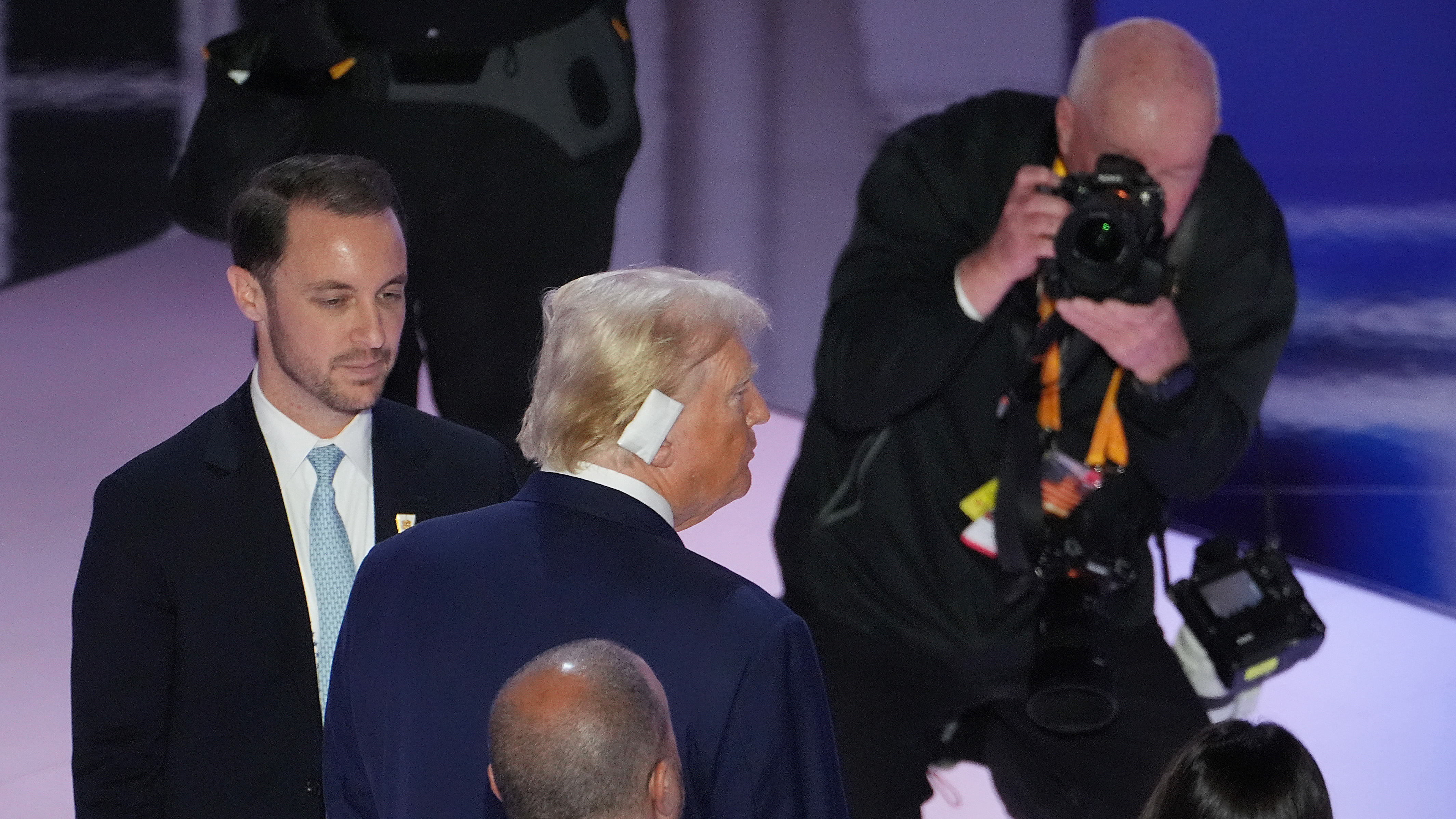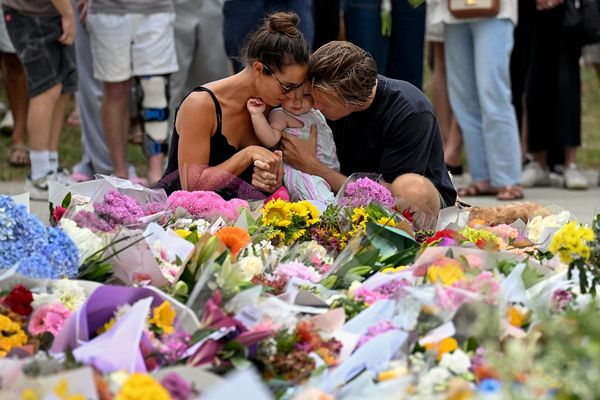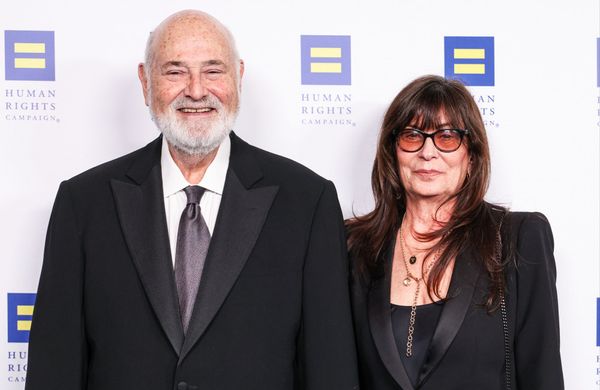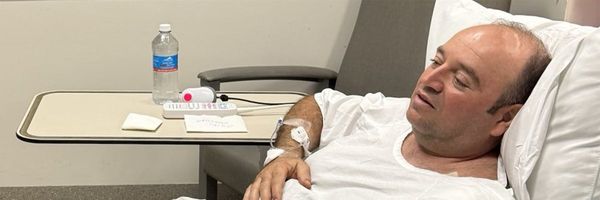
Photojournalist Doug Mills was documenting what started as a “very standard, typical rally” when both a shutter-ready finger and a decision to keep shooting resulted in some of the most iconic images of the 2024 presidential campaign.
Mills’ series of images of the assassination attempt on the then-presidential candidate, Donald Trump, at a rally in Pennsylvania has won the photographer a 2025 Pulitzer Prize for Breaking News Photography.
Mills is joined on the 2025 list of Pulitzer winners by Moises Saman in the Feature Photography category, for a series of images taken in the Sednaya prison in Syria, along with many journalists, authors and creators.
While the Breaking News and Feature categories are distinct in recognizing spontaneous and planned long-term coverage, this year’s Pulitzer-winning photographs both illustrate the power of photojournalism to speak in a way that words cannot over the most pressing issues.
Mills' winning photographs are the very definition of the Breaking News category, which recognizes photographers for capturing “an event that occurs with no advance notice and requires spontaneous coverage in the moment.”
Mills happened to be a few feet away from Trump when shots rang out. The following images of Trump’s expression, the Secret Service’s response, and the now-President’s raised fist as he left the stage were the result of a decision to keep shooting as shots rang out.
But the first shot in the series, which captures a bullet whizzing by in the background, is because Mills “just happened to have my finger on the shutter.”
While Mills has been recognized with one of the most well-known prizes in journalism for his split-second coverage, decades of work as a photographer led up to that moment.
Mills has been photographing Presidents for more than 40 years. In fact, the photographer has previously been part of team coverage that won Pulitzers in 1993 for the Clinton/Gore presidential campaign and in 1999 for coverage of the Clinton-Lewinski scandal, both as part of the Associated Press Team.
He joined the New York Times in 2002, a publication that has received four Pulitzer Prizes in this year’s honors.
Mills captured the series of photos with the Sony A1, with the shot of the bullet whizzing by in the background taken at 1/8000th of a second. Mills says that he didn’t realize he had actually caught the bullet in one of the frames until he was looking at his shots later, after being ushered into a tent at the event.
Retired FBI agent, Michael Harrigan, later said that “it absolutely could be showing the displacement of air due to a projectile.”
While Mills earned the Pulitzer for Breaking News, the Feature Photography category in the annual awards recognizes news photographs taken over time that “illuminate a subject in great depth.” Moises Saman, a contributor for The New Yorker, earned the prize for his black-and-white series of the Sednaya prison in Syria.
Saman documented families searching through the prison after its liberation, creating a series of images of families with haunted expressions, a basement of cells with doors standing open, close-ups of details like fingerprint smudges, and emptied mass graves.
The Pulitzer jury described the work as a series that forces “viewers to confront the raw horrors faced by prisoners and contemplate the scars on society.”
Saman’s career spans two decades, much of which was spent chronicling events in the Middle East, from the events following 9/11 to the Syrian civil war. His work has previously been recognized with a Guggenheim Fellowship in Photography, World Press Photo Awards and several other honors.
The series of photos, as well as the prizes for written journalism, come at a time that Lisa Gibbs, president and CEO of the Pulitzer Center, describes as difficult for journalists.
“These are particularly difficult times for the media and publishers in the United States,” Gibbs said ahead of announcing the 2025 winners.
“On top of years of severe financial pressure and layoffs, amid the dangers of covering wars and national disasters, journalists and writers now face additional threats in the form of legal harassment, the banning of books and attacks on their work and legitimacy.
“These efforts are meant to silence criticism, to edit or rewrite history. They’re an attempt to erode the First Amendment of our Constitution, which guarantees a free press and free speech. Despite all of this, and partly because of it, today is a day for celebration.”
Following the Pennsylvania rally where Mills captured the Pulitzer-winning images, for example, social media platforms were nearly immediately flooded with claims that the event was staged.
PolitiFact called those claims “Pants on Fire,” pointing to the thousands that witnessed the attempt, including dozens of news photographers. A volunteer fire chief, Corey Comperatore, died while shielding his family at the event.
Last month, a federal judge ordered the White House to allow Associated Press journalists to return after the Trump administration denied the organization access to events after a dispute over the Gulf-of-Mexico-Gulf-of-America nomenclature.
Evan Vucci, a photographer for the Associated Press who also captured images of the assassination attempt, spoke out on the ban prior to the judge’s ruling.
The organization also recognized Lynsey Addario, contributor at The New York Times, and the photography staff at the Associated Press as finalists in the Feature Photography category.
New York Times contributors Nanna Heitmann, Tyler Hicks, David Guttenfleder and Nicole Young were also recognized as finalists for the Breaking News Photography, along with the photography staff at Agence France-Presse.
You may also like
Read our Sony a1 review or browse the best mirrorless cameras.







